مرحبا بك في هذا المنتدى !
يبدو أنك جديد هنا. إذا كنت تريد أن تتورط، انقر فوق أحد هذه الأزرار!
روابط سريعة
الأقسام
- 9.5K جميع الأقسام
- العلوم الطبية الأساسية Basic Medical Sciences
- علم التشريح العام و الجنين Anatomy and Embryology
- علم وظائف الأعضاء (الفيزيولوجيا) Physiology
- علم النسج Histology
- علم النسج العام ( عدا الأسنان ) General Histology
- علم النسج الخاص بالأسنان Oral histology
- علم الخليةو الحياة Biology
- علم التشريح المرضي Pathology
- التشريح المرضي العام ( عدا الأسنان ) Pathology
- التشريح المرضي الخاص بالأسنان Oral Pathology
- علم الأحياء الدقيقة Microbiology
- الجراثيم و الفيروسات Germs and Viruses
- الطفيليات الطبية Parasitology
- الفطور و الحشرات Insects and Fungi
- علم الوراثة الطبية Medical Genetics
- علم المناعة الطبية Medical Immunology
- 4 العلوم الطبية السريرية Clinical Medical Sciences
- الأمراض الداخلية Internal Medicine
- 4 الجراحة Surgery
- التوليد و الأمراض النسائية Gynacology & Obstetrics
- الصحة الجنسية Sexual Health
- طب الأطفال Pediatrics
- الجلدية Dermatology
- العينية Ophthalamology
- انف و أذن و حنجرة Ear, Nose, and Throat
- الطب المخبري labratory Medicine
- علم الأورام Oncology
- الطب الشرعي Forensic Medicine
- الطب النفسي Psychiatric
- التغذية والطب البديل Nourishments and Alternative Medicine
- طب الطوارئ و الإسعافات الأولية Emergency Medicine And Primary aids
- متلازمات طبية Medical Syndromes
- علم الأشعة Radiology
- طب الأسنان Dental Medicine
- التعويضات المتحركة الكاملة و الجزئية Removable Prothodontics
- المداواة الترميمية operative dentistry
- المداواة اللبية Endodontics
- طب أسنان الأطفال Pediatric Dental
- جراحة الوجه والفكينoral surgery
- التعويضات الثابتة Fixed Prothodontics
- المواد السنية dental materials
- النسج حول السنية periodontology
- التقويم Orthodontics
- منتدى فنيي الأسنان dental technicians
- طب الفم العام general oral medicine
- علم الأشعة Radiology
- حالات سريريةClinical Cases
- أخر مستجدات طب الأسنان last news
- المنتدى الطبي السني العامgeneral dentistry
- علم الصيدلة Pharma
- علم الأدوية
- علم الأدوية Pharmacology
- أدوية الطوارئ Emergency drugs
- المضادات الحيوية Antibiotics
- الأدوبة المسببة للتشوهات الجنينية Teratogenic drugs
- أدوية Drugs
- علم الكيمياء Chemistry
- كيمياء حيوية سريرية Clinical Biochemistry
- الكيمياء العامة و العضوية و الفيزيائية General & organic chemistry & physical
- الكيمياء الحيوية Biochemistry
- الكيمياء التحليلية و التحليل الآلي Analytical chemistry and the automated analysis
- علم عقاقير Pharmacognosy
- الطب البديل Alternative Medicine
- علم الأعشاب الصيدلانية Pharmaceutical Herbs
- التكنولوجيا الصيدلية Pharmatical technology
- الصيدلانيات Pharmaceutics
- الصيدلة الحيوية والحرائك الدوائية Biopharmaceutics & Pharmacokinetics
- الصناعة الدوائية Drug Industry
- علم السموم Toxicology
- الوصفات الطبية Prescriptions
- صيدلية المجتمع و أدوية OTC Medicines OTC
- الكيمياء الصيدلية Pharmaceutical chemistry
- الصيدلة سريرية و صيدلية المشافي Clinical & Hospital Pharmacy
- دمويات و مناعيات hematology & immunology
- مراقبة جودة الأدوية Drug Quality Control
- البيولوجيا الجزيئية Molecular Biology
- الصحة العامة و تلوث البيئة General Health
- المنتدى الصيدلاني العام
- الجودة الغذائية Food quality
- قسم الجودة الطبية Department of Medical Quality
- قسم الجودة العام General Quality Department
- قسم السلامة والصحة المهنية Department of Occupational Safety and Health
- قسم جودة وسلامة الأغذية Department of Food Quality and Safety
- المنتدى الطبي العام
- المنتدى الطبي العام
- منتدى العلوم والتكنولوجيا الطبية Medical Technology
- قانون و أخلاقيات المهنة
- تاريخ و آداب الطب
- الدراسات العليا و الدراسة في الخارج
- امتحانات Medical Exams
- تبادل الكتب الطبية و الميديا و البيانات الطبية
- مواضيع طبية غير مصنفة
- قسم الأسرة و المجتمع
- العناية بالمرأة الحامل و المرضع
- تربية الأطفال
- الصحة العامة
- التغذية الصحية و الغذاء الصحي
- أسريات
- 2 استراحة العيادة السورية
- المنتدى العام
- نشاطات و ترفيه
- 1 إسلاميات
- تطوير الذات و البرمجة اللغوية العصبية NLP
- المنتدى التقني
- مكتبة الصور و التصميم
- 1 المنتدى الثقافي و الأدبي
- المنتدى الرياضي
- منتدى اللغات Foriegn Languages
- الساحة العامة
- ساحة الحوار و النقاش
- ترحيب و تعارف
- قسم الاستشارات الطبية
- البحوث والندوات العلمية
- الاقتراحات و التطويرات
- الأقــســـام الــعـــامــة
- منتدى الحوار العام
- المواضيع العامة القديمة المستردة
- المواضيع الحاوية على مرفقات
داء الفصال العظمي Osteoarthritis
What is Osteoarthritis?
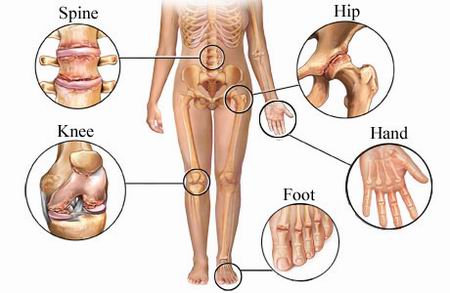
Osteoarthritis (OA) is also known as "degenerative joint disease". It is thought to be mainly a
problem of "wear and tear" and hence affects the elderly more than the young. When it occurs in
the younger age groups, it is usually associated with injury or previous damage to the joint.
Certain occupations may also make a person more prone to osteoarthritis in certain joints. There
is new evidence that osteoarthritis occurs also as a result of abnormal cartilage metabolism.
problem of "wear and tear" and hence affects the elderly more than the young. When it occurs in
the younger age groups, it is usually associated with injury or previous damage to the joint.
Certain occupations may also make a person more prone to osteoarthritis in certain joints. There
is new evidence that osteoarthritis occurs also as a result of abnormal cartilage metabolism.
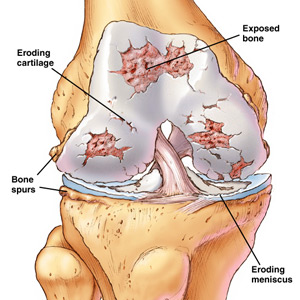
Types of Osteoarthritis
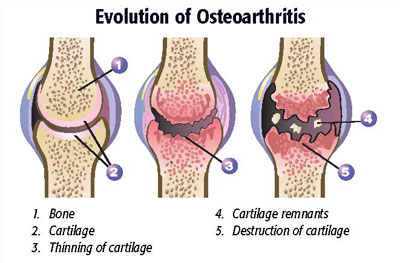
Almost any joint can be involved in osteoarthritis. However the pattern of joint involvement, Xray
changes and the absence of certain features on blood tests can help to distinguish it from
other forms of arthritis.
The small joints of the hands are commonly involved in "generalized osteoarthritis". This form
of OA tends to occur in females, can run in families and there is no underlying cause. OA of the
hands rarely causes severe symptoms and the function of the hand remains good for many years.
The spine is also commonly involved in OA. When this is severe, the surrounding nerve roots
may be pinched and cause tingling, numbness or weakness. Other names for spinal OA are
"cervical spondylosis" when the neck is involved and "lumbar spondylosis" when the lower back
is involved.
Large joints can also be affected, especially the hip and the knee. Other joints include the ankle,
the shoulder and the elbow. When only one joint is involved, it is likely to be "secondary OA"
where there is an underlying cause such as previous trauma.
changes and the absence of certain features on blood tests can help to distinguish it from
other forms of arthritis.
The small joints of the hands are commonly involved in "generalized osteoarthritis". This form
of OA tends to occur in females, can run in families and there is no underlying cause. OA of the
hands rarely causes severe symptoms and the function of the hand remains good for many years.
The spine is also commonly involved in OA. When this is severe, the surrounding nerve roots
may be pinched and cause tingling, numbness or weakness. Other names for spinal OA are
"cervical spondylosis" when the neck is involved and "lumbar spondylosis" when the lower back
is involved.
Large joints can also be affected, especially the hip and the knee. Other joints include the ankle,
the shoulder and the elbow. When only one joint is involved, it is likely to be "secondary OA"
where there is an underlying cause such as previous trauma.
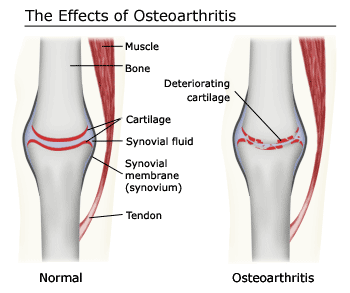
What are the Symptoms?
Joint pains tend to occur after prolonged use. As such, symptoms are usually worse towards the
evening. This is in contrast to inflammatory forms of arthritis where symptoms are generally
worse in the early morning.
There may also be periods where the joint can become red, warm and swollen. Arthritis due to
deposition of crystals in the joint can mimic osteoarthritis.
evening. This is in contrast to inflammatory forms of arthritis where symptoms are generally
worse in the early morning.
There may also be periods where the joint can become red, warm and swollen. Arthritis due to
deposition of crystals in the joint can mimic osteoarthritis.
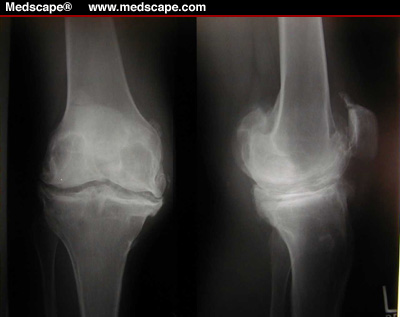

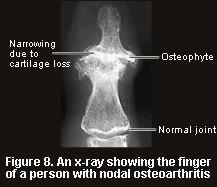
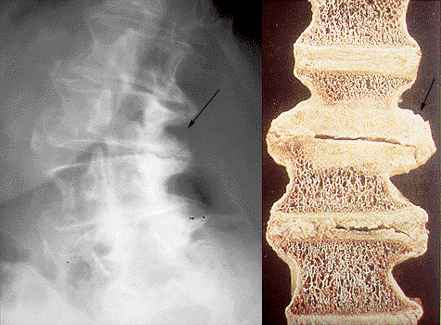
Treatment
Weight Control
Weight control is especially important for the large weight bearing joints such as the hip and the
knee. There is no need for specific dietary adjustments except for a weight reducing diet in those
who are overweight.
Weight control is especially important for the large weight bearing joints such as the hip and the
knee. There is no need for specific dietary adjustments except for a weight reducing diet in those
who are overweight.
Physiotherapy and Exercise
Physiotherapy is important to maintain strength in the surrounding muscles. The affected joint
will then be subjected to less stress and strain. Walking aids are also prescribed for this purpose.
In general, swimming is an exercise that is beneficial to almost any form of arthritis. Some sports
which place severe demands on the joints may not be suitable but the patient should aim to keep
as fit as possible. This includes stopping cigarette smoking.
Physiotherapy is important to maintain strength in the surrounding muscles. The affected joint
will then be subjected to less stress and strain. Walking aids are also prescribed for this purpose.
In general, swimming is an exercise that is beneficial to almost any form of arthritis. Some sports
which place severe demands on the joints may not be suitable but the patient should aim to keep
as fit as possible. This includes stopping cigarette smoking.
Appropriate Footwear
Shoes should be comfortable and of a good fit. They should provide good support and even
weight distribution. High heels are generally not helpful. Sports shoes usually fulfil most
requirements of a good shoe.
Shoes should be comfortable and of a good fit. They should provide good support and even
weight distribution. High heels are generally not helpful. Sports shoes usually fulfil most
requirements of a good shoe.
Medications
Many medications are prescribed for control of symptoms only. Simple painkillers can be very
helpful unless the joint is inflamed. When this happens, non-steroidal anti-inflammatory drugs or
injection of steroids into the joint can provide relief. At present, research is still going on to see if
any treatment can stop the disease from progressing. Some natural supplements such as
glucosamine and chondroitin may be helpful in certain patients. Some patients may respond to
injections of a lubricant substance called Synvisc into joints.
Many medications are prescribed for control of symptoms only. Simple painkillers can be very
helpful unless the joint is inflamed. When this happens, non-steroidal anti-inflammatory drugs or
injection of steroids into the joint can provide relief. At present, research is still going on to see if
any treatment can stop the disease from progressing. Some natural supplements such as
glucosamine and chondroitin may be helpful in certain patients. Some patients may respond to
injections of a lubricant substance called Synvisc into joints.
Joint Replacement
In advanced stages, replacement of a severely damaged joint can produce very good results
especially for the hip.
In advanced stages, replacement of a severely damaged joint can produce very good results
especially for the hip.
to see joint replacemet flashes and animation you can visit flashes encyclopedia ..... click here
Conclusion
Osteoarthritis is a common condition. Much can be done for patients to enable them to live as
normal a life as possible.
التعليقات